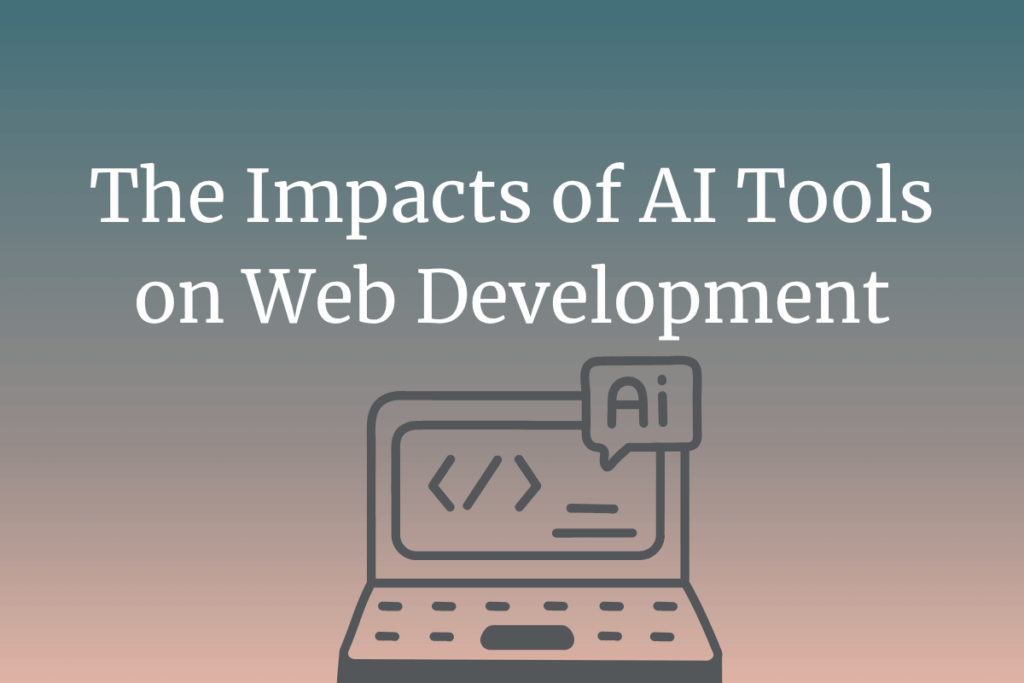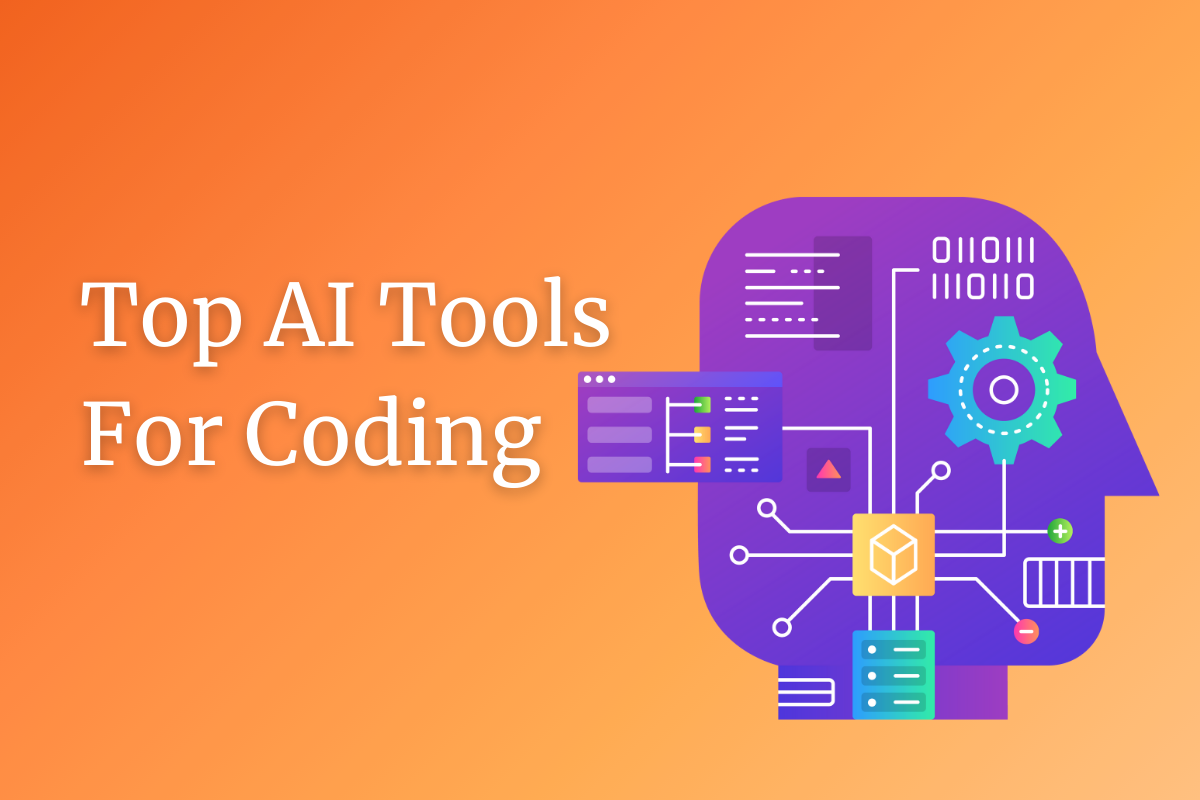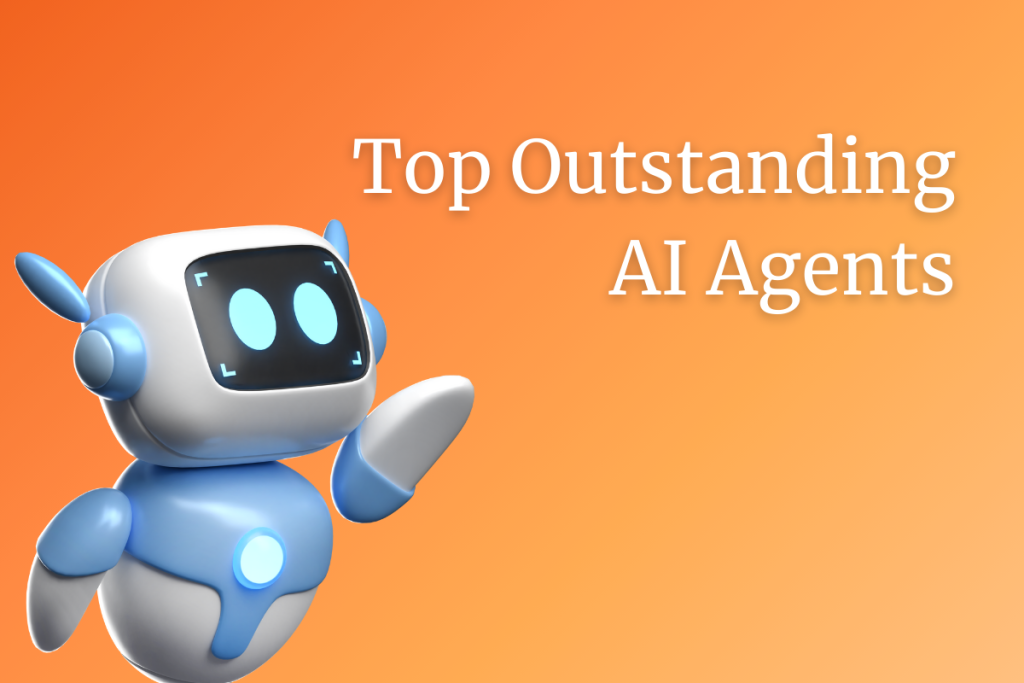Artificial Intelligence (AI) is increasingly transforming the web development landscape, significantly impacting development productivity, design, and code quality. As organizations strive for greater efficiency and effectiveness, AI tools such as GitHub Copilot, OpenAI Codex, and automated testing frameworks have emerged, enabling developers to automate repetitive tasks, streamline workflows, and enhance overall coding practices.
The impact of AI-augmented tools on web development represents a significant shift in how developers and designers create, manage, and deliver web applications. By integrating artificial intelligence into the development process, these tools enhance productivity, improve design capabilities, and elevate code quality, allowing professionals to focus on more complex and creative tasks instead of repetitive ones. As the demand for efficient and high-quality web solutions grows, the adoption of AI in this domain has become increasingly notable, marking a transformative era in software development practices.
Impact on Development Productivity
The integration of artificial intelligence (AI) into web development has significantly influenced developer productivity, streamlining workflows and enhancing code quality. Research indicates that AI can boost developer productivity by as much as 45%, highlighting its potential as a powerful tool for efficiency in the field.
Automation of Repetitive Tasks
AI tools automate mundane and repetitive tasks, allowing developers to focus on more complex and creative aspects of their work. For instance, these tools can facilitate tasks such as resizing images, creating responsive designs, and generating visual design assets, which can streamline the overall web development process. By alleviating the burden of these time-consuming tasks, developers can enhance their productivity and improve the user experience.
AI Adoption and Productivity Metrics
The DORA 2024 Accelerate State of DevOps report shows a notable correlation between AI adoption and productivity gains. Specifically, a 25% increase in AI utilization is associated with a 2.1% rise in productivity, illustrating how AI can optimize developers’ daily tasks. Furthermore, developers have reported improvements in critical areas such as workflow efficiency and code generation speed. However, the rapid adoption of AI tools has led some to overlook fundamental development principles, such as the importance of small batch sizes.
Strategies for Enhancing Developer Productivity with AI
Organizations are encouraged to adopt a clear strategy to harness AI’s benefits in development. The first step involves defining measurable objectives that pinpoint where AI can make the most significant impact, such as reducing repetitive tasks or enhancing code quality. Setting success metrics, like reducing cycle time or increasing high-quality code, can help track progress and ensure alignment with team priorities.
AI in Project Management and Collaboration
AI’s role in project management also contributes to productivity enhancements. Intelligent project management tools can predict project durations, assess potential risks, and allocate resources effectively based on historical data. This predictive capability aids project managers in making informed decisions that optimize workflows and overall project performance. Additionally, collaborative design assistants powered by AI can facilitate real-time teamwork and communication, further improving the efficiency of development processes.
Impact on Design
AI technologies have significantly transformed the landscape of web design, enabling designers to enhance user experiences, streamline processes, and make data-driven decisions.
Enhanced User Experience
AI-driven predictive analysis allows developers and UX designers to understand user behaviors by analyzing historical data. This insight into changing trends and customer needs facilitates informed design decisions that align with user demands.
Personalization is pivotal in creating smooth user experiences; AI can analyze user data to offer unique, tailored content and recommendations, exemplified by features like Spotify’s Discover Weekly, which generates playlists based on individual listening habits.
A/B Testing and Rapid Prototyping
Traditional A/B testing can be time-consuming and error-prone, as it involves manual variations of design experiments. AI streamlines this process by rapidly analyzing vast datasets in real-time, identifying user patterns and insights that inform design choices more efficiently than manual methods.
Additionally, AI-powered prototyping tools enable designers to quickly generate interactive prototypes from wireframes, allowing for early visualization of the final product and fostering collaboration among team members.
Automated Content Generation and Responsive Design
AI-generated content tools can assist designers by producing relevant text, such as product descriptions and blog posts, which accelerates the design process without sacrificing quality.
Moreover, AI technologies ensure responsive design across various devices, automatically adapting layouts and content to provide consistent and visually appealing user experiences, regardless of their device.
Collaboration and Communication Challenges
Despite AI tools’ advantages, designers face challenges in their adoption. Some UX designers may struggle to accept AI-driven designs, preferring a hands-on approach to creation.
Furthermore, AI’s lack of nuanced communication skills can pose difficulties in collaboration with teammates from diverse disciplines, as effective communication is crucial for presenting design ideas and negotiating with stakeholders.
The Future of AI in Design
Looking ahead, the integration of AI in UX design is expected to foster continuous innovation, allowing designers to focus on the more creative aspects of their work while AI handles data-driven tasks. As the technology evolves, it holds the potential to further refine design processes, enhance personalization, and improve overall user engagement in web design.
Impact on Code Quality
AI tools have significantly transformed the web development landscape concerning code quality. These tools enhance the development process by leveraging machine learning algorithms, ultimately leading to more efficient and reliable code.
Code Explanation and Documentation
AI-powered tools like CodeGeeX provide detailed breakdowns of source code, offering insights into its functionality and logic. This feature particularly benefits junior and senior developers, as it clarifies complex code and aids documentation efforts. The ability to generate clear explanations streamlines the onboarding process for new team members and improves comprehension of codebases.
Automated Testing and Debugging
AI has revolutionized automated testing, allowing for the generation of accurate and reliable unit tests that save developers time and effort. These tools ensure thorough testing by covering all possible behaviors within the code and generating relevant test cases. Furthermore, AI-driven code review tools enhance code quality by automatically analyzing code for errors and suggesting improvements, which helps identify potential bugs before deployment.
Code Optimization and Refactoring
AI tools can also analyze existing codebases to identify areas for optimization and refactoring, ensuring long-term maintainability and scalability. For instance, tools like GitHub Copilot and Tabnine can suggest more efficient or readable code alternatives, effectively helping developers streamline their workflows and enhance code quality.
Seamless Collaboration
With the integration of AI tools into version control systems, collaboration among team members becomes more efficient. These tools facilitate code sharing and reviews and help resolve merge conflicts, which are common challenges in team projects. By improving communication and collaboration, AI enhances the code quality produced through collective efforts.
Productivity Gains
The adoption of AI in web development has led to increased productivity, enabling developers to write code faster and with fewer errors. By automating repetitive tasks and providing intelligent code suggestions, these tools allow developers to focus on more complex problem-solving tasks, which ultimately contributes to higher code quality.
Challenges and Limitations
The integration of artificial intelligence (AI) in web development brings significant advantages, yet it also presents several challenges and limitations that must be addressed.
Ethical Considerations
As AI technologies are integrated into web development, ethical dilemmas emerge that must be carefully navigated. Key concerns include data privacy and the potential for bias in AI algorithms, which can result in discriminatory outcomes if not properly addressed. Regular audits of AI systems are crucial for identifying biases and ensuring transparency in their operations. Furthermore, ethical reasoning is essential to prioritize user well-being and maintain public trust in AI applications within web development. Engaging diverse teams in the development process can enhance awareness of these ethical considerations and promote more responsible AI use.
Financial Hurdles
One of the primary obstacles to the widespread adoption of AI tools in web development is the financial investment required. Organizations often face considerable capital outlays for acquiring and implementing these tools, including ongoing subscription fees, maintenance, and personnel training costs. This financial burden can be particularly daunting for smaller organizations or those with limited funding. Additionally, existing systems may require infrastructure upgrades to ensure compatibility with new AI technologies, further complicating the financial landscape. To mitigate these challenges, it is essential for organizations to strategically plan their expenses, explore cost-effective solutions, and demonstrate the potential long-term benefits of AI investments through increased efficiency and productivity.
Resistance to Change
Another significant challenge is the resistance from developers and stakeholders who may be skeptical about adopting new technologies. This resistance can stem from a lack of trust in AI systems or insufficient familiarity with their functionality. To counteract this resistance, organizations should focus on developing comprehensive training programs that provide practical experience with AI technologies and showcase the positive impacts of these systems on development processes. Engaging developers early in the adoption process and incorporating their feedback can also help build consensus and alleviate concerns.
Technical Limitations
While AI tools are increasingly sophisticated, they often do not utilize cutting-edge AI techniques. Instead, many rely on rule-based automation, which, while effectively organizing tasks and minimizing errors, may not fully harness the capabilities of advanced AI methodologies. This limitation can hinder the potential for significant improvements in development speed and quality, particularly in complex deployments. Additionally, AI explainability remains a major challenge in the industry, as stakeholders may struggle to understand the decision-making processes behind AI-driven outcomes. Ensuring that developers can communicate AI concepts in simple, clear terms is essential for fostering trust and collaboration.
Future Trends
The future of artificial intelligence (AI) in web development is poised for significant transformation. AI will bring with it new methodologies and enhancements that will impact productivity, design, and code quality. As AI continues to evolve, its integration into web development processes will become more pronounced, reshaping how developers approach their work.
AI-Driven Automation
One of the primary trends is the increased automation of repetitive tasks through AI tools. These tools can handle mundane activities such as resizing images or optimizing code, which allows developers to focus on more creative and complex tasks. By streamlining these processes, AI enhances productivity and reduces the likelihood of human error, resulting in higher-quality outputs.
Predictive Crisis Management
As AI technology advances, its application in predictive crisis management will likely expand within the web development domain. By leveraging predictive analytics, developers and PR teams can anticipate potential crises by analyzing historical data and industry trends, allowing them to implement pre-emptive measures. This foresight will be instrumental in mitigating risks and ensuring project success.
Enhanced Audience Segmentation
AI’s capability to analyze vast amounts of audience data will empower web developers to create more tailored user experiences. By segmenting audiences and personalizing communication strategies, developers can ensure their designs and functionalities resonate with diverse stakeholders, enhancing overall user engagement and satisfaction.
Prototyping and Code Generation
Another promising trend is the ability to rapidly prototype and generate code using AI tools. Developers can now create working code prototypes from natural language descriptions within seconds, facilitating quick testing and feedback loops.
Moreover, AI can generate repetitive code structures, allowing developers to concentrate on innovative aspects of their projects. This shift towards AI-assisted coding not only boosts productivity but also elevates the quality of the final product.
Collaboration and Lifelong Learning
The integration of AI into web development will necessitate a focus on collaboration among teams. As AI tools become increasingly sophisticated, fostering strong relationships between developers, data scientists, and AI specialists will be crucial. Additionally, developers must embrace a mindset of lifelong learning to keep pace with emerging AI technologies and maintain their competitive edge in the industry.
Ethical Considerations
As AI becomes a more integral part of the development landscape, ethical considerations will also take center stage. Developers will need to prioritize user-centric design principles, ensuring that AI systems are designed with fairness, transparency, and ethical guidelines in mind. This focus will enhance user trust and contribute to a more responsible technological landscape.
Conclusion
The integration of artificial intelligence (AI) in web development is poised to revolutionize the industry, enhancing both productivity and creativity.
AI-augmented tools are redefining what’s possible in web development. By streamlining workflows, assisting in design decisions, and promoting higher code standards, these tools empower developers to build faster, smarter, and more consistently. While human creativity and judgment remain irreplaceable, AI serves as a powerful partner, enabling teams to focus on innovation rather than repetition. As the capabilities of AI continue to evolve, the developers and organizations who embrace this synergy will gain a competitive edge in delivering high-performing, user-centric digital experiences. The future of development isn’t just automated; it’s intelligently augmented.
The tools are here, the standards are emerging, and the AI world is only just beginning to show what it’s capable of.
ContactContact
Stay in touch with Us



